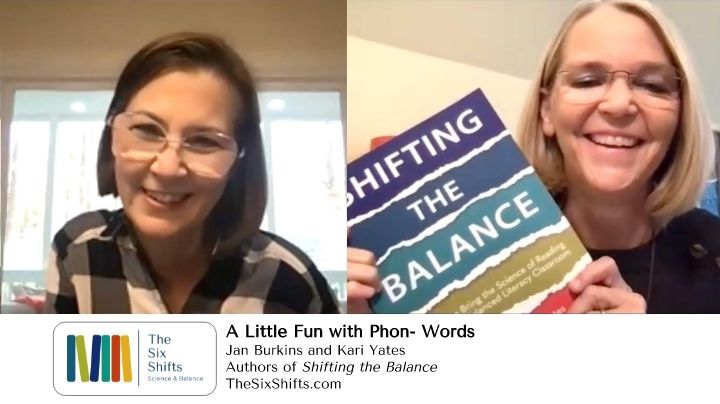Phonics?
Phonological awareness?
Phonemic awareness?
What’s the difference, really? And how can you keep all these phon- words straight?

Well, confusion about the phon- words is created not only because they sound alike, but also because there is a great deal of overlap between and amongst the concepts these terms represent.
But as teachers of early literacy, it is essential that we have a crystal clear understanding of how these important words are alike and how they are different.
So, today we offer some clarification on each of these /ph/ terms, as well as one important DO and one DON’T for each.
PHONOLOGICAL AWARENESS
Phonological awareness is a big, broad umbrella term.
It refers to a child’s developing awareness and ability to manipulate parts of speech such as sentences, words, and word parts. Phonological awareness work can include things like identifying words in a sentence, identifying or producing rhyming words, or clapping the number of syllables in a word.
|
DON’T LINGER on the more general phonological awareness tasks (rhyming, alliteration, syllable level work). They can be really fun for children, but they aren’t where the real impact is when it comes to learning to read. So, be sure not to linger with things like rhyming or clapping syllables, even if children are having difficulty with these things. |
|
INSTEAD, PRIORITIZE instructional work at the phoneme level (phonemic awareness) because it has more critical and direct implications for learning to read and write. The good news is, that as children become readers, those “general skills” often become easier to master with the support of print. |
PHONEMIC AWARENESS
Phonemic awareness is a subset of phonological awareness.
It involves work with the smallest speech sounds within words, or phonemes. Phonemic awareness work helps a child understand the order and relationship of the spoken sounds within a word, which is critical on the road to eventually becoming a reader. Phonemic awareness work includes:
- Blending the individual sounds of a word together
- Teacher: Blend these sounds together. . . /sss/ . . /aaa/ . . /t/. . . What’s the word?
- Student: sat
- Segmenting a whole word into individual sounds
- Teacher: Listen to the whole word, then say each sound . . . sat.
- Student: /sss/ /aaa/ /t/
- Deleting sounds from words
- Teacher: Say sat, but don’t say /sss/.
- Student: at
- Substituting sounds in a word
- Teacher: Say sat. Now change the /sss/ to /mmm/.
- Student: mat
|
DON’T HESITATE to start at the phoneme level, even early in the kindergarten year. Because it is so critical to later reading, phoneme level work should not be delayed until children have mastered more general phonological tasks. |
|
INSTEAD, phonemic awareness instruction can BEGIN EARLY in the kindergarten year. You can help your students get off to a successful start by fortifying your own understanding of what makes phonemic awareness tasks more or less difficult, including the type of task, word length, the position of the phoneme in a word, articulatory gestures, etc. (We offer more information about this in Table 2.3, pages 45-46 of Shifting the Balance.) |
PHONICS
Phonics instruction introduces the written symbols that represent all the spoken sounds in our language.
Phonics is where we offer children explicit training in how letters and letter combinations (graphemes) are used to represent, or spell, the individual sounds (phonemes) in the words we use. During phonics instruction, children learn the rules of the road for encoding (writing) and decoding (reading) the spoken language, beginning with the simplest most predictable sound-spellings and moving to more complex.
|
DON’T ISOLATE phonics from phonemic awareness instruction or assume that just because students know lots of letter names and letter sounds that phonemic awareness will come naturally for them. |
|
INSTEAD, intentionally EMBED phonemic awareness work into your phonics instruction. Using multi-sensory supports to make the abstract ideas phoneme placement in words more concrete and tangible is a great way to do this. Elkonin boxes with magnetic letters and word chains are two of our favorite ways of bringing phonemic awareness and phonics instruction together. |
As you work to make learning to read easier, rather than harder for children, understanding how the phon- terms differ and overlap is an essential building block in our instructional foundations.
If you want to learn more about high-leverage phonemic awareness instruction, Chapter 2 of Shifting the Balance zooms in on Recommitting to Phonemic Awareness instruction as we move away from taking a “bit-of-this-and-a-bit-of that” approach.





Trackbacks/Pingbacks